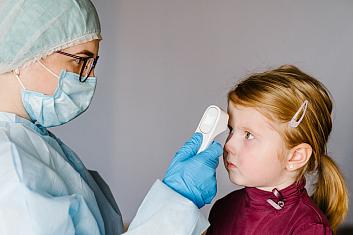With the COVID-19 pandemic nearly a year old now, Thompson and Rasmussen (2020) note that, "Overall, we have learned that children get sick less often than adults, but a few children have gotten severely sick. This update summarizes the current understanding of how children are affected and gives ways to keep families safe as children continue to grow and thrive."
In the new paper, the authors provide a Q&A to help better understand how children are at risk: "We know that this virus mostly spreads via respiratory droplets when people with infection cough, sneeze, talk, or even breathe, although it can spread in other ways. Some people with COVID-19 have fever, cough, shortness of breath, muscle aches, headache, and diarrhea, symptoms that are similar to those from other viral infections such the flu, but some have no symptoms at all. Children can get COVID-19 from family members and other close contacts such as friends and teachers at school and from sports activities. As children get older, their risk of getting sick enough to be hospitalized is higher, although newborns and young infants are also at increased risk. Risk of death in children is far lower than in adults, but some children have died of COVID-19. Children who are Hispanic, Black, or American Indian or Alaska native are at higher risk for severe disease and death."
Reference: Thompson LA and Rasmussen SA. One Year Later, How Does COVID-19 Affect Children? JAMA Pediatr. Published online Dec. 28, 2020. doi:10.1001/jamapediatrics.2020.5817

Be the first to comment on "One Year Later, How Does COVID-19 Affect Children?"